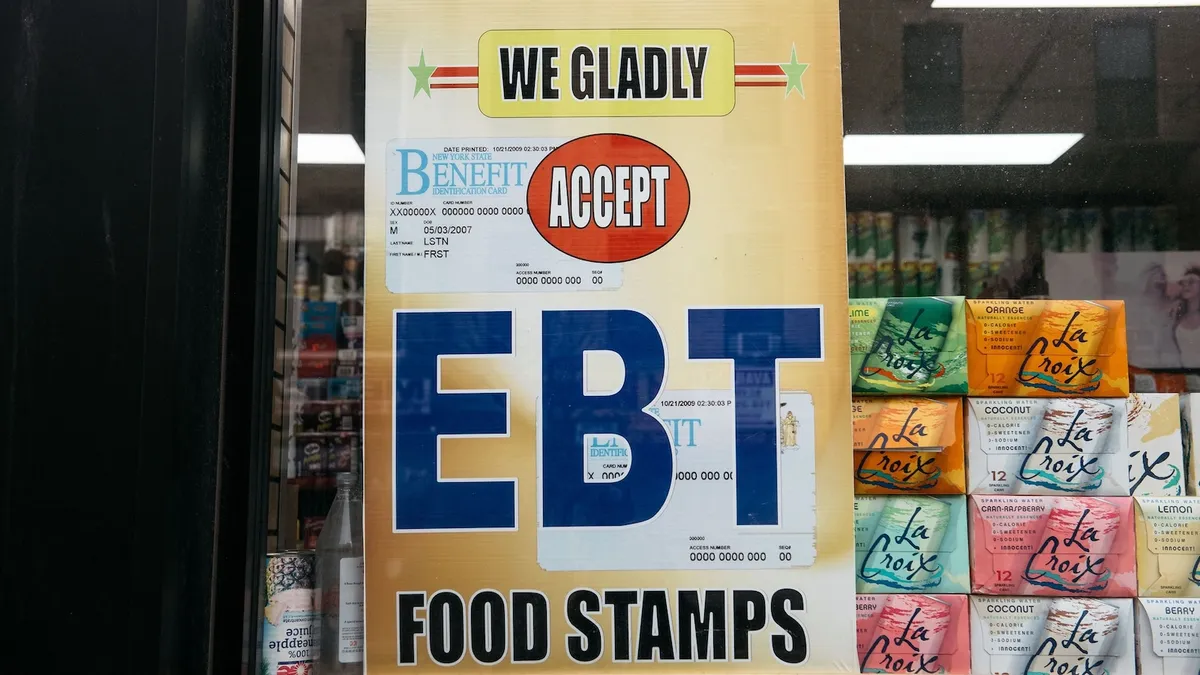
As the federal funding for the Supplemental Nutrition Assistance Program (SNAP) is set to cease on November 1 due to the ongoing government shutdown, approximately 42 million Americans are at risk of losing vital food assistance. The U.S. Department of Agriculture (USDA) has announced that it will not utilize emergency funds to support SNAP benefits, confirming on its website that resources are exhausted.
SNAP, commonly known as the food stamp program, serves as a crucial federal safety net for families in need, with eligibility determined by factors such as income, household size, and living expenses. Currently, around 260,000 retailers, including major supermarket chains, discount grocery outlets, and farmers' markets, are authorized to accept SNAP benefits, allowing them to receive reimbursements for eligible food items.
The blame for the impending freeze on SNAP benefits is being directed by Congressional Republicans and the USDA towards Senate Democrats, citing their refusal to approve a continuing resolution to fund the government. Conversely, Democrats are insisting on negotiations regarding Affordable Care Act subsidies before any agreement to reopen the government can be reached.
Many organizations focused on hunger relief and food insecurity are sounding alarms over the potential crisis. They highlight that funding for SNAP had already been compromised following significant cuts implemented during President Donald Trump's administration, which included a staggering $186 billion reduction in SNAP support. Experts warn that without the anticipated $8 billion in grocery assistance, millions could face severe food shortages, with Joel Berg, CEO of Hunger Free America, stating, “We are going to see the greatest hunger crisis since the Great Depression.”
Individuals relying on SNAP benefits are expressing their fears about the potential loss of support. Martina Santos, a 67-year-old Bronx resident, shares her concerns as she currently receives approximately $290 per month in SNAP benefits. Santos, who volunteers at the West Side Campaign Against Hunger, fears that without SNAP, she would be forced to seek assistance from food pantries and may struggle to pay essential bills such as electricity and internet, stating, “I have four kids. I don’t want to ask for help from my family.”
Santos, who manages health conditions like high blood pressure and diabetes, emphasizes the importance of maintaining a healthy diet, expressing worry that losing SNAP benefits could exacerbate her health issues. “I’m scared about my condition too,” she admits.
Berg warns that while charitable food systems—such as food pantries and soup kitchens—will attempt to mitigate the effects of the SNAP freeze, they often cannot meet the specific dietary needs of those who rely on SNAP. “Charity can’t solve the problem,” he asserts, highlighting the limitations in providing culturally appropriate and healthy food options.
Jenna, a 37-year-old mother of four from Oklahoma, has been on SNAP since 2017. Despite working full-time at a tree farm, she finds it challenging to make ends meet due to the special needs of her children, which require her to miss work for appointments and therapies. Jenna receives between $600 and $620 monthly in SNAP benefits, which sometimes last only a few weeks. Upon learning of the potential cut-off, she began stocking her freezer with affordable, healthy meals and is exploring food trading with friends and family.
Jenna expresses concern for her children’s nutritional needs, stating, “I try to keep a lot of healthy snacks in the house,” but anticipates that the absence of SNAP support will negatively impact her family’s food options.
Organizations like the Boys & Girls Club of Boston (BGCB) are stepping in to fill the void left by SNAP cuts. BGCB provides nearly 300,000 meals annually and plans to increase its efforts in light of the expected crisis. Robert Lewis, Jr., president of BGCB, emphasizes the importance of supporting families during this challenging time, recalling his own experiences growing up with federal food assistance.
Similarly, Greg Silverman, CEO of the West Side Campaign Against Hunger, is preparing to expand food distribution efforts, focusing on providing nutritious options rather than processed foods. He acknowledges the limitations of charitable food systems, stating, “We will never make up the gap that SNAP fills.”
The looming loss of SNAP benefits poses a significant threat to food security for millions of Americans. As political negotiations continue, the urgency to address the needs of vulnerable populations grows. Community organizations are stepping up, but the overarching reality remains: without comprehensive solutions, many families may face unprecedented levels of hunger.